-
EXECUTIVE SUMMARY
-
MARKET INTRODUCTION
-
Definition
-
Scope of the Study
- Research Objective
- Assumptions
- Limitations
-
RESEARCH METHODOLOGY
-
3.1.
-
Overview
-
Data Mining
-
Secondary Research
-
Primary Research
- Primary Interviews and Information Gathering Process
- Breakdown
-
of Primary Respondents
-
Forecasting Model
-
Market Size Estimation
- Bottom-Up Approach
- Top-Down Approach
-
Data Triangulation
-
Validation
-
MARKET DYNAMICS
-
Overview
-
Drivers
-
Restraints
-
Opportunities
-
MARKET FACTOR ANALYSIS
-
5.1.
-
Value Chain Analysis
-
Porter’s Five Forces Analysis
- Bargaining
- Bargaining Power of Buyers
- Threat of
- Threat of Substitutes
- Intensity of Rivalry
-
Power of Suppliers
-
New Entrants
-
COVID-19 Impact Analysis
- Market Impact Analysis
- Regional
- Opportunity and Threat Analysis
-
Impact
-
GLOBAL SYNTHETIC DIAMOND
-
MARKET, BY PRODUCT
-
Overview
-
Bort
-
Dust
-
Grit
-
Powder
-
Stone
-
GLOBAL SYNTHETIC DIAMOND MARKET, BY TYPE
-
Overview
-
Polished
-
Rough
-
GLOBAL SYNTHETIC DIAMOND
-
MARKET, BY MANUFACTURING PROCESS
-
High Pressure
-
High Temperature
-
Chemical Vapour Deposition
-
GLOBAL SYNTHETIC DIAMOND MARKET, BY APPLICATION
-
Overview
-
Gem
-
Heat Sinks/Exchangers
-
High-end
-
Electronics
-
Laser and X-ray
-
Machine and Cutting Tools
-
9.7.
-
Surgical Machinery
-
Water Treatment
-
Quantum Computing
-
9.10.
-
Optical, Sensors and Scanning
-
Medical
-
Electricals
-
10.
-
GLOBAL SYNTHETIC DIAMOND MARKET, BY REGION
-
Overview
-
North
- U.S.
- Canada
-
America
-
Europe
- Germany
- France
- U.K
- Italy
- Spain
-
10.3.6.
-
Rest of Europe
-
Asia-Pacific
- China
- India
- Japan
- South Korea
- Australia
- Rest
-
of Asia-Pacific
-
Rest of the World
- Middle East
- Latin America
-
10.5.2.
-
Africa
-
COMPETITIVE LANDSCAPE
-
Overview
-
Competitive Analysis
-
Market Share Analysis
-
Major Growth
-
Strategy in the Global Synthetic Diamond Market,
-
Competitive Benchmarking
-
Leading Players in Terms of Number of Developments in the Global Synthetic
-
Diamond Market,
-
Key developments and Growth Strategies
- New
- Merger & Acquisitions
-
Product Launch/Type Deployment
-
11.7.3.
-
Joint Ventures
-
Major Players Financial Matrix
- Sales &
- Major Players R&D Expenditure. 2022
-
Operating Income, 2022
-
12.
-
COMPANY PROFILES
-
ELEMENT SIX UK LTD.
- Company Overview
- Financial Overview
- Product Offered
- Key Developments
- SWOT Analysis
- Key Strategies
-
SCIO DIAMOND TECHNOLOGY
- Company Overview
- Financial Overview
- Key Developments
- SWOT Analysis
-
CORPORATION
-
12.2.3.
-
Product Offered
-
12.2.6.
-
Key Strategies
-
APPLIED DIAMOND INC
- Company Overview
- Product Offered
- Key Developments
- SWOT Analysis
- Key Strategies
-
12.3.2.
-
Financial Overview
-
HEYARU
- Financial Overview
- Product Offered
- Key Developments
- SWOT Analysis
- Key Strategies
-
12.4.1.
-
Company Overview
-
SANDVIK GROUP
- Company Overview
- Financial Overview
- Product Offered
- Key Developments
- SWOT Analysis
- Key Strategies
-
ILJIN DIAMOND CO., LTD.
- Company
- Financial Overview
- Product Offered
- SWOT Analysis
- Key Strategies
- Company Overview
- Financial
- Product Offered
- Key Developments
- Key Strategies
-
Overview
-
12.6.4.
-
Key Developments
-
12.7.
-
HENAN HUANGHE WHIRLWIND CO.,LTD.
-
Overview
-
12.7.5.
-
SWOT Analysis
-
ZHENGZHOU SINO-CRYSTAL DIAMOND
- Company Overview
- Financial Overview
- Key Developments
- SWOT Analysis
-
CO.,LTD.
-
12.8.3.
-
Product Offered
-
12.8.6.
-
Key Strategies
-
INDUSTRIAL ABRASIVES LTD
- Company Overview
- Financial Overview
- Product Offered
- Key Developments
- SWOT Analysis
- Key Strategies
-
SWAROVSKI
- Financial Overview
- Product Offered
- Key Developments
- SWOT Analysis
- Key Strategies
-
12.10.1.
-
Company Overview
-
Soham Industrial Diamonds
- Company Overview
- Product Offered
- Key Developments
- SWOT Analysis
- Key Strategies
-
12.11.2.
-
Financial Overview
-
Eco Star Diamond
- Company Overview
- Financial Overview
- Product
- Key Developments
- SWOT Analysis
-
Offered
-
12.12.6.
-
Key Strategies
-
Krystal Grown Diamonds
- Company Overview
- Financial Overview
- Product Offered
- Key Developments
- SWOT Analysis
- Key Strategies
-
HeNan LiLiang
- Company Overview
- Financial Overview
- Product Offered
- Key Developments
- SWOT Analysis
- Key Strategies
-
Diamond Co., Ltd
-
New Diamond Technology
- Company
- Financial Overview
- Product Offered
- SWOT Analysis
- Key Strategies
- Company Overview
- Financial Overview
- Product Offered
- Key Developments
- SWOT Analysis
- Key Strategies
-
Overview
-
12.15.4.
-
Key Developments
-
12.16.
-
FOREVER COMPANIES
-
Hyperion Materials & Technologies
- Financial Overview
- Product Offered
- Key Developments
- SWOT Analysis
- Key Strategies
-
12.17.1.
-
Company Overview
-
Scio Diamond Technology Corporation
- Company Overview
- Product Offered
- Key Developments
- SWOT Analysis
- Key Strategies
-
12.18.2.
-
Financial Overview
-
NOVA DIAMONDS
- Company Overview
- Financial Overview
- Key Developments
- SWOT Analysis
-
PTY LTD
-
12.19.3.
-
Product Offered
-
12.19.6.
-
Key Strategies
-
Charles & Colvard
- Company Overview
- Financial Overview
- Product Offered
- Key Developments
- SWOT Analysis
- Key Strategies
-
APPENDIX
-
13.1.
-
References
-
Related Reports
-
-
LIST OF TABLES
-
TABLE
-
GLOBAL SYNTHETIC DIAMOND MARKET, SYNOPSIS, 2025 - 2034
-
GLOBAL SYNTHETIC
-
DIAMOND MARKET, ESTIMATES & FORECAST, 2025 - 2034 (USD BILLION)
-
TABLE 3
-
GLOBAL SYNTHETIC DIAMOND MARKET, BY PRODUCT, 2025 - 2034 (USD BILLION)
-
TABLE
-
GLOBAL SYNTHETIC DIAMOND MARKET, BY TYPE, 2025 - 2034 (USD BILLION)
-
TABLE
-
GLOBAL SYNTHETIC DIAMOND MARKET, BY APPLICATION, 2025 - 2034 (USD BILLION)
-
GLOBAL SYNTHETIC DIAMOND MARKET, BY MANUFACTURING PROCESS, 2025 - 2034
-
(USD BILLION)
-
NORTH AMERICA SYNTHETIC DIAMOND MARKET, BY PRODUCT, 2025
-
- 2034 (USD BILLION)
-
NORTH AMERICA SYNTHETIC DIAMOND MARKET, BY TYPE,
-
NORTH AMERICA SYNTHETIC DIAMOND MARKET, BY
-
APPLICATION, 2025 - 2034 (USD BILLION)
-
NORTH AMERICA SYNTHETIC DIAMOND
-
MARKET, BY MANUFACTURING PROCESS, 2025 - 2034 (USD BILLION)
-
NORTH
-
AMERICA SYNTHETIC DIAMOND MARKET, BY COUNTRY, 2025 - 2034 (USD BILLION)
-
TABLE
-
U.S. SYNTHETIC DIAMOND MARKET, BY PRODUCT, 2025 - 2034 (USD BILLION)
-
TABLE
-
U.S. SYNTHETIC DIAMOND MARKET, BY TYPE, 2025 - 2034 (USD BILLION)
-
TABLE
-
U.S. SYNTHETIC DIAMOND MARKET, BY APPLICATION, 2025 - 2034 (USD BILLION)
-
TABLE
-
U.S. SYNTHETIC DIAMOND MARKET, BY MANUFACTURING PROCESS, 2025 - 2034 (USD BILLION)
-
CANADA SYNTHETIC DIAMOND MARKET, BY PRODUCT, 2025 - 2034 (USD BILLION)
-
CANADA SYNTHETIC DIAMOND MARKET, BY TYPE, 2025 - 2034 (USD BILLION)
-
CANADA SYNTHETIC DIAMOND MARKET, BY APPLICATION, 2025 - 2034 (USD BILLION)
-
CANADA SYNTHETIC DIAMOND MARKET, BY MANUFACTURING PROCESS, 2025 - 2034
-
(USD BILLION)
-
EUROPE SYNTHETIC DIAMOND MARKET, BY PRODUCT, 2025 -
-
EUROPE SYNTHETIC DIAMOND MARKET, BY TYPE, 2025
-
- 2034 (USD BILLION)
-
EUROPE SYNTHETIC DIAMOND MARKET, BY APPLICATION,
-
EUROPE SYNTHETIC DIAMOND MARKET, BY MANUFACTURING
-
PROCESS, 2025 - 2034 (USD BILLION)
-
EUROPE SYNTHETIC DIAMOND MARKET,
-
BY COUNTRY, 2025 - 2034 (USD BILLION)
-
GERMANY SYNTHETIC DIAMOND MARKET,
-
BY PRODUCT, 2025 - 2034 (USD BILLION)
-
GERMANY SYNTHETIC DIAMOND MARKET,
-
BY TYPE, 2025 - 2034 (USD BILLION)
-
GERMANY SYNTHETIC DIAMOND MARKET,
-
BY APPLICATION, 2025 - 2034 (USD BILLION)
-
GERMANY SYNTHETIC DIAMOND
-
MARKET, BY MANUFACTURING PROCESS, 2025 - 2034 (USD BILLION)
-
FRANCE
-
SYNTHETIC DIAMOND MARKET, BY PRODUCT, 2025 - 2034 (USD BILLION)
-
FRANCE
-
SYNTHETIC DIAMOND MARKET, BY TYPE, 2025 - 2034 (USD BILLION)
-
FRANCE
-
SYNTHETIC DIAMOND MARKET, BY APPLICATION, 2025 - 2034 (USD BILLION)
-
TABLE 32
-
FRANCE SYNTHETIC DIAMOND MARKET, BY MANUFACTURING PROCESS, 2025 - 2034 (USD BILLION)
-
ITALY SYNTHETIC DIAMOND MARKET, BY PRODUCT, 2025 - 2034 (USD BILLION)
-
ITALY SYNTHETIC DIAMOND MARKET, BY TYPE, 2025 - 2034 (USD BILLION)
-
ITALY SYNTHETIC DIAMOND MARKET, BY APPLICATION, 2025 - 2034 (USD BILLION)
-
ITALY SYNTHETIC DIAMOND MARKET, BY MANUFACTURING PROCESS, 2025 - 2034
-
(USD BILLION)
-
SPAIN SYNTHETIC DIAMOND MARKET, BY PRODUCT, 2025 - 2034
-
(USD BILLION)
-
SPAIN SYNTHETIC DIAMOND MARKET, BY TYPE, 2025 - 2034
-
(USD BILLION)
-
SPAIN SYNTHETIC DIAMOND MARKET, BY APPLICATION, 2025
-
- 2034 (USD BILLION)
-
SPAIN SYNTHETIC DIAMOND MARKET, BY MANUFACTURING
-
PROCESS, 2025 - 2034 (USD BILLION)
-
U.K SYNTHETIC DIAMOND MARKET, BY
-
PRODUCT, 2025 - 2034 (USD BILLION)
-
U.K SYNTHETIC DIAMOND MARKET, BY
-
TYPE, 2025 - 2034 (USD BILLION)
-
U.K SYNTHETIC DIAMOND MARKET, BY APPLICATION,
-
U.K SYNTHETIC DIAMOND MARKET, BY MANUFACTURING
-
PROCESS, 2025 - 2034 (USD BILLION)
-
REST OF EUROPE SYNTHETIC DIAMOND
-
MARKET, BY PRODUCT, 2025 - 2034 (USD BILLION)
-
REST OF EUROPE SYNTHETIC
-
DIAMOND MARKET, BY TYPE, 2025 - 2034 (USD BILLION)
-
REST OF EUROPE
-
SYNTHETIC DIAMOND MARKET, BY APPLICATION, 2025 - 2034 (USD BILLION)
-
TABLE 48
-
REST OF EUROPE SYNTHETIC DIAMOND MARKET, BY MANUFACTURING PROCESS, 2025 - 2034 (USD
-
BILLION)
-
ASIA PACIFIC SYNTHETIC DIAMOND MARKET, BY PRODUCT, 2025 -
-
ASIA PACIFIC SYNTHETIC DIAMOND MARKET, BY TYPE,
-
ASIA PACIFIC SYNTHETIC DIAMOND MARKET, BY
-
APPLICATION, 2025 - 2034 (USD BILLION)
-
ASIA PACIFIC SYNTHETIC DIAMOND
-
MARKET, BY MANUFACTURING PROCESS, 2025 - 2034 (USD BILLION)
-
ASIA PACIFIC
-
SYNTHETIC DIAMOND MARKET, BY COUNTRY, 2025 - 2034 (USD BILLION)
-
JAPAN
-
SYNTHETIC DIAMOND MARKET, BY PRODUCT, 2025 - 2034 (USD BILLION)
-
JAPAN
-
SYNTHETIC DIAMOND MARKET, BY TYPE, 2025 - 2034 (USD BILLION)
-
JAPAN
-
SYNTHETIC DIAMOND MARKET, BY APPLICATION, 2025 - 2034 (USD BILLION)
-
TABLE 57
-
JAPAN SYNTHETIC DIAMOND MARKET, BY MANUFACTURING PROCESS, 2025 - 2034 (USD BILLION)
-
CHINA SYNTHETIC DIAMOND MARKET, BY PRODUCT, 2025 - 2034 (USD BILLION)
-
CHINA SYNTHETIC DIAMOND MARKET, BY TYPE, 2025 - 2034 (USD BILLION)
-
CHINA SYNTHETIC DIAMOND MARKET, BY APPLICATION, 2025 - 2034 (USD BILLION)
-
CHINA SYNTHETIC DIAMOND MARKET, BY MANUFACTURING PROCESS, 2025 - 2034
-
(USD BILLION)
-
INDIA SYNTHETIC DIAMOND MARKET, BY PRODUCT, 2025 - 2034
-
(USD BILLION)
-
INDIA SYNTHETIC DIAMOND MARKET, BY TYPE, 2025 - 2034
-
(USD BILLION)
-
INDIA SYNTHETIC DIAMOND MARKET, BY APPLICATION, 2025
-
- 2034 (USD BILLION)
-
INDIA SYNTHETIC DIAMOND MARKET, BY MANUFACTURING
-
PROCESS, 2025 - 2034 (USD BILLION)
-
AUSTRALIA SYNTHETIC DIAMOND MARKET,
-
BY PRODUCT, 2025 - 2034 (USD BILLION)
-
AUSTRALIA SYNTHETIC DIAMOND
-
MARKET, BY TYPE, 2025 - 2034 (USD BILLION)
-
AUSTRALIA SYNTHETIC DIAMOND
-
MARKET, BY APPLICATION, 2025 - 2034 (USD BILLION)
-
AUSTRALIA SYNTHETIC
-
DIAMOND MARKET, BY MANUFACTURING PROCESS, 2025 - 2034 (USD BILLION)
-
TABLE 70
-
SOUTH KOREA SYNTHETIC DIAMOND MARKET, BY PRODUCT, 2025 - 2034 (USD BILLION)
-
TABLE
-
SOUTH KOREA SYNTHETIC DIAMOND MARKET, BY TYPE, 2025 - 2034 (USD BILLION)
-
TABLE
-
SOUTH KOREA SYNTHETIC DIAMOND MARKET, BY APPLICATION, 2025 - 2034 (USD BILLION)
-
SOUTH KOREA SYNTHETIC DIAMOND MARKET, BY MANUFACTURING PROCESS, 2025
-
- 2034 (USD BILLION)
-
REST OF ASIA-PACIFIC SYNTHETIC DIAMOND MARKET,
-
BY PRODUCT, 2025 - 2034 (USD BILLION)
-
REST OF ASIA-PACIFIC SYNTHETIC
-
DIAMOND MARKET, BY TYPE, 2025 - 2034 (USD BILLION)
-
REST OF ASIA-PACIFIC
-
SYNTHETIC DIAMOND MARKET, BY APPLICATION, 2025 - 2034 (USD BILLION)
-
TABLE 77
-
REST OF ASIA PACIFIC SYNTHETIC DIAMOND MARKET, BY MANUFACTURING PROCESS, 2025 -
-
REST OF WORLD SYNTHETIC DIAMOND MARKET, BY PRODUCT,
-
REST OF WORLD SYNTHETIC DIAMOND MARKET,
-
BY TYPE, 2025 - 2034 (USD BILLION)
-
REST OF WORLD SYNTHETIC DIAMOND
-
MARKET, BY APPLICATION, 2025 - 2034 (USD BILLION)
-
RERST OF WORLD SYNTHETIC
-
DIAMOND MARKET, BY MANUFACTURING PROCESS, 2025 - 2034 (USD BILLION)
-
TABLE 82
-
REST OF WORLD SYNTHETIC DIAMOND MARKET, BY COUNTRY, 2025 - 2034 (USD BILLION)
-
MIDDLE EAST SYNTHETIC DIAMOND MARKET, BY PRODUCT, 2025 - 2034 (USD BILLION)
-
MIDDLE EAST SYNTHETIC DIAMOND MARKET, BY TYPE, 2025 - 2034 (USD BILLION)
-
MIDDLE EAST SYNTHETIC DIAMOND MARKET, BY APPLICATION, 2025 - 2034 (USD
-
BILLION)
-
MIDDLE-EAST SYNTHETIC DIAMOND MARKET, BY MANUFACTURING PROCESS,
-
AFRICA SYNTHETIC DIAMOND MARKET, BY PRODUCT,
-
AFRICA SYNTHETIC DIAMOND MARKET, BY TYPE,
-
AFRICA SYNTHETIC DIAMOND MARKET, BY APPLICATION,
-
AFRICA SYNTHETIC DIAMOND MARKET, BY MANUFACTURING
-
PROCESS, 2025 - 2034 (USD BILLION)
-
LATIN AMERICA SYNTHETIC DIAMOND
-
MARKET, BY PRODUCT, 2025 - 2034 (USD BILLION)
-
LATIN AMERICA SYNTHETIC
-
DIAMOND MARKET, BY TYPE, 2025 - 2034 (USD BILLION)
-
LATIN AMERICA SYNTHETIC
-
DIAMOND MARKET, BY APPLICATION, 2025 - 2034 (USD BILLION)
-
LATIN AMERICA
-
SYNTHETIC DIAMOND MARKET, BY MANUFACTURING PROCESS, 2025 - 2034 (USD BILLION)
-
LIST OF FIGURES
-
RESEARCH PROCESS
-
MARKET STRUCTURE
-
FOR THE GLOBAL SYNTHETIC DIAMOND MARKET
-
MARKET DYNAMICS FOR THE GLOBAL
-
SYNTHETIC DIAMOND MARKET
-
GLOBAL SYNTHETIC DIAMOND MARKET, SHARE (%),
-
BY PRODUCT, 2022
-
GLOBAL SYNTHETIC DIAMOND MARKET, SHARE (%), BY TYPE,
-
GLOBAL SYNTHETIC DIAMOND MARKET, SHARE (%), BY APPLICATION, 2022
-
GLOBAL SYNTHETIC DIAMOND MARKET, SHARE (%), BY MANUFACTURING PROCESS,
-
GLOBAL SYNTHETIC DIAMOND MARKET, SHARE (%), BY REGION, 2022
-
NORTH AMERICA: SYNTHETIC DIAMOND MARKET, SHARE (%), BY REGION, 2022
-
EUROPE: SYNTHETIC DIAMOND MARKET, SHARE (%), BY REGION, 2022
-
FIGURE
-
ASIA-PACIFIC: SYNTHETIC DIAMOND MARKET, SHARE (%), BY REGION, 2022
-
FIGURE
-
REST OF THE WORLD: SYNTHETIC DIAMOND MARKET, SHARE (%), BY REGION, 2022
-
FIGURE
-
GLOBAL SYNTHETIC DIAMOND MARKET: COMPANY SHARE ANALYSIS, 2022 (%)
-
FIGURE
-
ELEMENT SIX UK LTD.: FINANCIAL OVERVIEW SNAPSHOT
-
ELEMENT SIX UK
-
LTD.: SWOT ANALYSIS
-
SCIO DIAMOND TECHNOLOGY CORPORATION: FINANCIAL
-
OVERVIEW SNAPSHOT
-
SCIO DIAMOND TECHNOLOGY CORPORATION: SWOT ANALYSIS
-
APPLIED DIAMOND INC: FINANCIAL OVERVIEW SNAPSHOT
-
APPLIED
-
DIAMOND INC: SWOT ANALYSIS
-
HEYARU: FINANCIAL OVERVIEW SNAPSHOT
-
HEYARU: SWOT ANALYSIS
-
SANDVIK GROUP.: FINANCIAL OVERVIEW
-
SNAPSHOT
-
SANDVIK GROUP.: SWOT ANALYSIS
-
ILJIN DIAMOND
-
CO., LTD.: FINANCIAL OVERVIEW SNAPSHOT
-
ILJIN DIAMOND CO., LTD.: SWOT
-
ANALYSIS
-
HENAN HUANGHE WHIRLWIND CO.,LTD.: FINANCIAL OVERVIEW SNAPSHOT
-
HENAN HUANGHE WHIRLWIND CO.,LTD.: SWOT ANALYSIS
-
ZHENGZHOU
-
SINO-CRYSTAL DIAMOND CO.,LTD.: FINANCIAL OVERVIEW SNAPSHOT
-
ZHENGZHOU
-
SINO-CRYSTAL DIAMOND CO.,LTD.: SWOT ANALYSIS
-
INDUSTRIAL ABRASIVES
-
LTD: FINANCIAL OVERVIEW SNAPSHOT
-
INDUSTRIAL ABRASIVES LTD: SWOT ANALYSIS
-
SWAROVSKI: FINANCIAL OVERVIEW SNAPSHOT
-
SWAROVSKI: SWOT
-
ANALYSIS
-
SOHAM INDUSTRIAL DIAMONDS.: FINANCIAL OVERVIEW SNAPSHOT
-
SOHAM INDUSTRIAL DIAMONDS.: SWOT ANALYSIS
-
ECO STAR DIAMOND:
-
FINANCIAL OVERVIEW SNAPSHOT
-
ECO STAR DIAMOND: SWOT ANALYSIS
-
FIGURE
-
KRYSTAL GROWN DIAMONDS: FINANCIAL OVERVIEW SNAPSHOT
-
KRYSTAL GROWN
-
DIAMONDS: SWOT ANALYSIS
-
HENAN LILIANG DIAMOND CO., LTD: FINANCIAL
-
OVERVIEW SNAPSHOT
-
HENAN LILIANG DIAMOND CO., LTD: SWOT ANALYSIS
-
NEW DIAMOND TECHNOLOGY.: FINANCIAL OVERVIEW SNAPSHOT
-
FIGURE 43
-
NEW DIAMOND TECHNOLOGY.: SWOT ANALYSIS
-
FOREVER COMPANIES.: FINANCIAL
-
OVERVIEW SNAPSHOT
-
FOREVER COMPANIES.: SWOT ANALYSIS
-
FIGURE 46
-
HYPERION MATERIALS & TECHNOLOGIES: FINANCIAL OVERVIEW SNAPSHOT
-
FIGURE 47
-
HYPERION MATERIALS & TECHNOLOGIES: SWOT ANALYSIS
-
SCIO DIAMOND
-
TECHNOLOGY CORPORATION: FINANCIAL OVERVIEW SNAPSHOT
-
SCIO DIAMOND
-
TECHNOLOGY CORPORATION: SWOT ANALYSIS
-
NOVA DIAMONDS PTY LTD: FINANCIAL
-
OVERVIEW SNAPSHOT
-
NOVA DIAMONDS PTY LTD: SWOT ANALYSIS
-
FIGURE
-
CHARLES & COLVARD: FINANCIAL OVERVIEW SNAPSHOT
-
CHARLES &
-
COLVARD: SWOT ANALYSIS

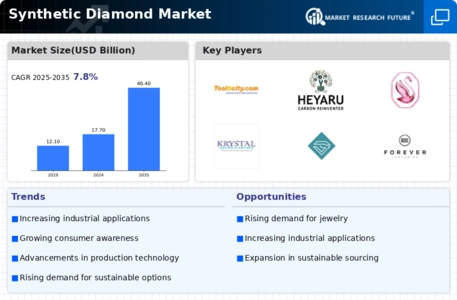
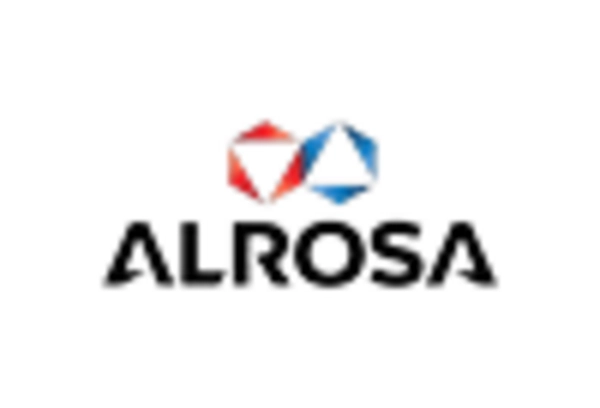


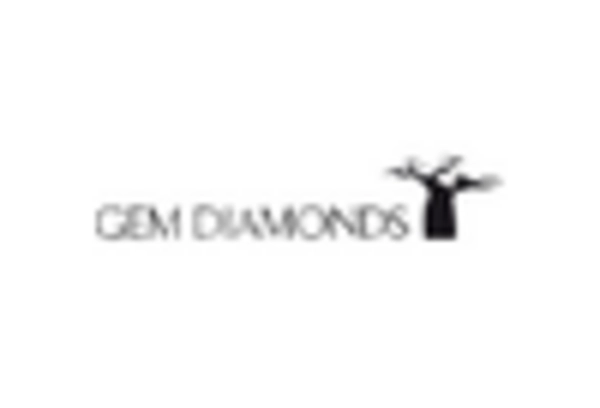
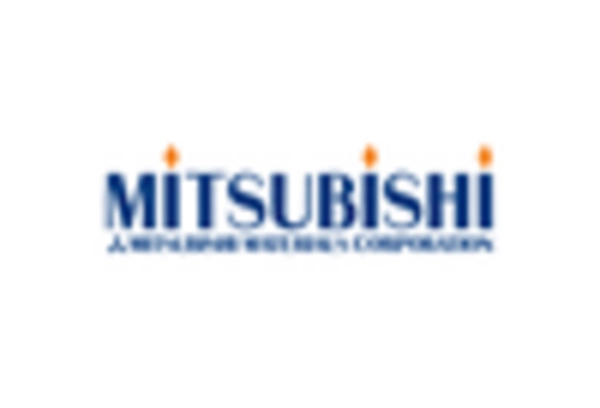
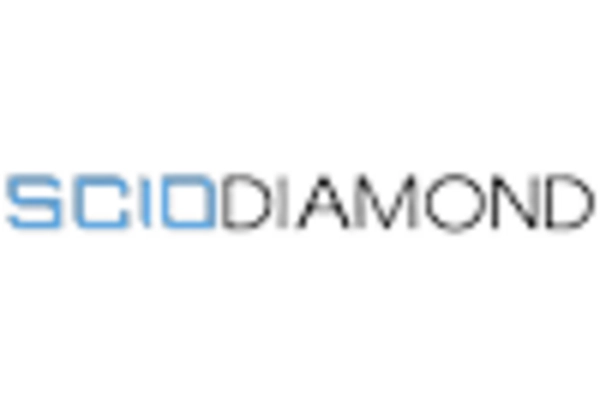

Leave a Comment